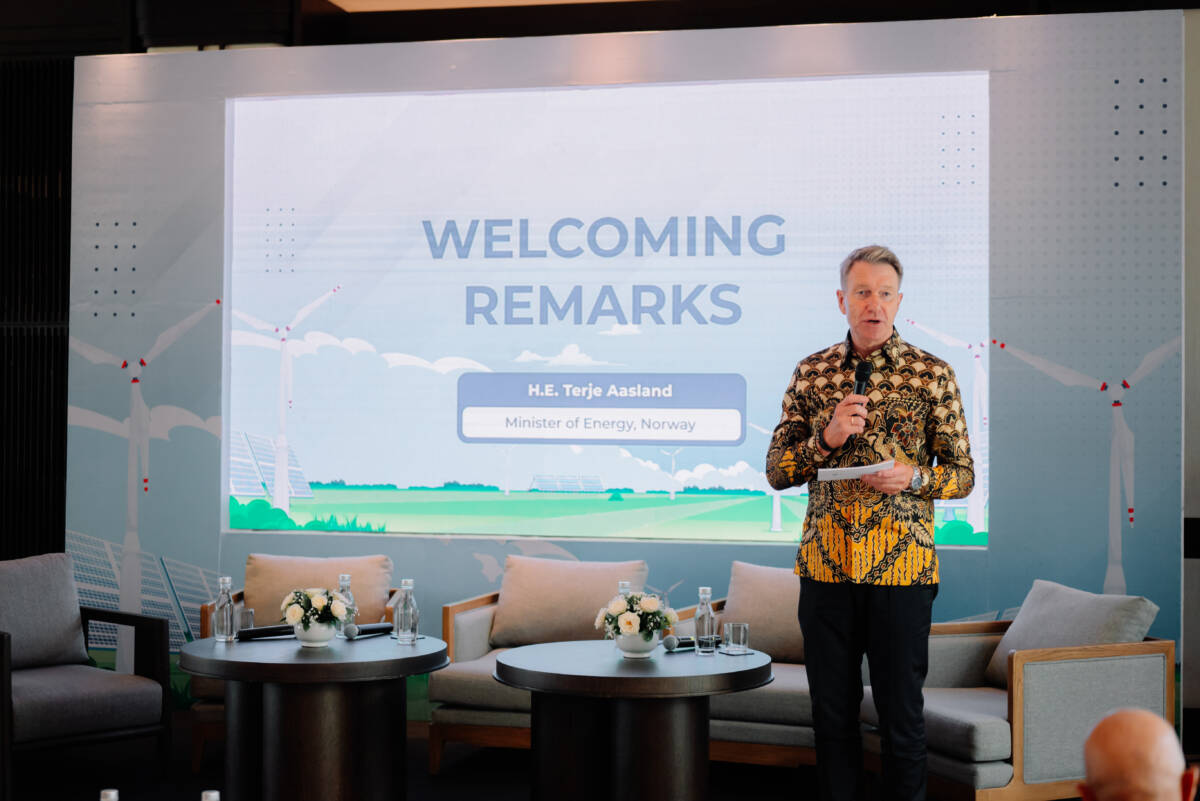Jakarta, July 9, 2024 – Indonesia and Norway have set ambitious targets for the green transition and transformation. Both countries are crucial in realizing the goal of net zero emissions under the Paris Agreement and keeping 1.5 degrees C within reach.
Norway is the world’s third-largest oil and natural gas exporter, accounting for 2 percent of global crude oil production and 3 percent of global natural gas production. However, according to European Parliament data, as of September 2023, Norway meets 92 percent of its electricity needs with renewable energy, mainly hydropower.
Norwegian Minister of Petroleum and Energy, Terje Asland, emphasized that it is necessary to reduce greenhouse gas emissions while ensuring sufficient energy for the world’s growing population. Not only that, but Ashland also noted that energy must be available, affordable, and have low emissions.
“We have established energy cooperation with Indonesia since 1995. As a form of implementation of the cooperation, we have also held a bilateral dialog between the two countries. We appreciate this partnership, and we also note that the energy transition process can be carried out in various ways, such as the use of hydrogen, carbon capture and storage (CCS) technology, or offshore wind power plants,” Asland said during the Norway and Indonesia Closed Discussion organized by the Norwegian Embassy, Indonesia Clean Energy Forum (ICEF), and Institute for Essential Services Reform (IESR) on Tuesday (2/7/2024).
Fabby Tumiwa, the Executive Director of the Institute for Essential Services Reform (IESR), explained that the energy transition process will bring about various implications for the current energy industry. This includes risks and opportunities, particularly for the oil and gas sector, which plays a significant role in the world’s primary energy supply. At least three main implications should be taken into account.
“First, the declining demand for fossil fuels. With the emergence of renewable energy technologies and various sectors shifting to clean energy sources, demand for fossil energy is expected to decline. Based on the International Energy Agency (IEA) report titled Word Energy Outlook 2023, the percentage of fossil fuels that has persisted for decades at around 80 percent will drop to 73 percent by 2030,” Fabby said.
Furthermore, Fabby said that there is increasing regulation and pressure from governments and investors to adopt policies and measures to reduce emissions and increase resilience to climate change. Fabby emphasized that this includes carbon taxes, emission reduction schemes, subsidies for low-carbon technologies, bans on new fossil fuel infrastructure, and stricter environmental standards. The oil and gas industry must comply with these regulations and commit to sustainability and social responsibility.
“Third, the energy transition demands innovation and adaptation in technology and business models for energy businesses. This means replacing fossil fuels with renewable energy sources and changing how energy is produced, distributed, stored, and consumed. The oil and gas industry needs to embrace innovation and leverage competencies and assets to develop new solutions and services in the changing energy market,” Fabby said.
Andrea Scrabello, Head of Asset Management at Equinor, stated that the global energy system is transforming to provide sufficient and affordable energy while reducing carbon dioxide emissions.
“We target reducing carbon by around 20 percent by 2030. In driving carbon reduction and the energy transition, we have several strategies, including driving high-value growth in renewable energy and creating opportunities for low-carbon solutions. Most importantly, we need collaboration with government, industry, and other institutions to drive this energy transition,” Andrea said.

